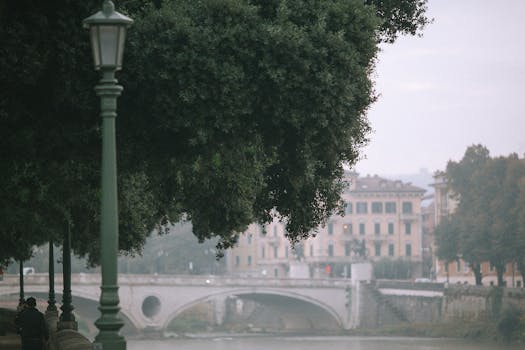
Urban Green Spaces: The Future of Outdoor Living in European Cities by 2025
Urban Green Spaces are becoming increasingly important in European cities, and for good reason. As the world becomes more urbanized, the need for green spaces has never been more pressing. Urban Green Spaces are not just aesthetically pleasing, but they also provide numerous benefits for both the environment and human health.
What are Urban Green Spaces?
Urban Green Spaces refer to any area of greenery within an urban environment, including parks, gardens, green roofs, and even small pockets of vegetation in between buildings. These spaces can be public or private and can range in size from a few square meters to several hectares.
Benefits of Urban Green Spaces
The benefits of Urban Green Spaces are numerous and well-documented. Some of the most significant advantages include:
- Improved Air Quality: Urban Green Spaces help to absorb pollutants and particulate matter from the air, improving air quality and making cities healthier places to live.
- Climate Regulation: Green spaces can help to regulate the urban microclimate, reducing the urban heat island effect and keeping cities cooler in the summer and warmer in the winter.
- Mental Health Benefits: Spending time in nature has been shown to have a positive impact on mental health, reducing stress and anxiety and improving mood.
- Biodiversity Conservation: Urban Green Spaces can provide habitats for urban wildlife, helping to conserve biodiversity and support ecosystem services.
- Recreation and Leisure: Urban Green Spaces provide opportunities for recreation and leisure, improving the quality of life for urban residents.
The Future of Urban Green Spaces in European Cities
By 2025, European cities are expected to be even more urbanized, with a growing need for green spaces. In response, many cities are incorporating green infrastructure into their urban planning, including green roofs, green walls, and urban forests.
Some of the trends that are expected to shape the future of urban green spaces in European cities include:
- Increased Use of Green Roofs: Green roofs are becoming increasingly popular in European cities, providing insulation, reducing stormwater runoff, and creating habitats for urban wildlife.
- Integration of Green Spaces into Urban Planning: Cities are beginning to integrate green spaces into their urban planning, recognizing the importance of green infrastructure for both the environment and human health.
- Community Engagement and Participation: There is a growing recognition of the importance of community engagement and participation in the planning and maintenance of urban green spaces.
- Use of Technology to Monitor and Manage Green Spaces: Technology is being used to monitor and manage urban green spaces, including sensors to track soil moisture, temperature, and air quality.
Case Studies: Urban Green Spaces in European Cities
There are many examples of successful urban green spaces in European cities. Some case studies include:
- Vancouver’s Greenest City Initiative: Vancouver’s Greenest City Initiative aims to make Vancouver the greenest city in the world by 2025, with a focus on green spaces, renewable energy, and sustainable transportation.
- Copenhagen’s Green Roofs: Copenhagen has implemented a number of green roof initiatives, including a policy requiring all new buildings to have green roofs.
- Barcelona’s Superblocks: Barcelona’s Superblocks program aims to reduce traffic congestion and improve air quality by creating car-free zones and increasing green spaces.
Conclusion
Urban Green Spaces are a critical component of sustainable and livable cities. As European cities continue to urbanize, the need for green spaces will only grow. By incorporating green infrastructure into urban planning, engaging with local communities, and using technology to monitor and manage green spaces, cities can create healthy, sustainable, and resilient environments for their residents.






